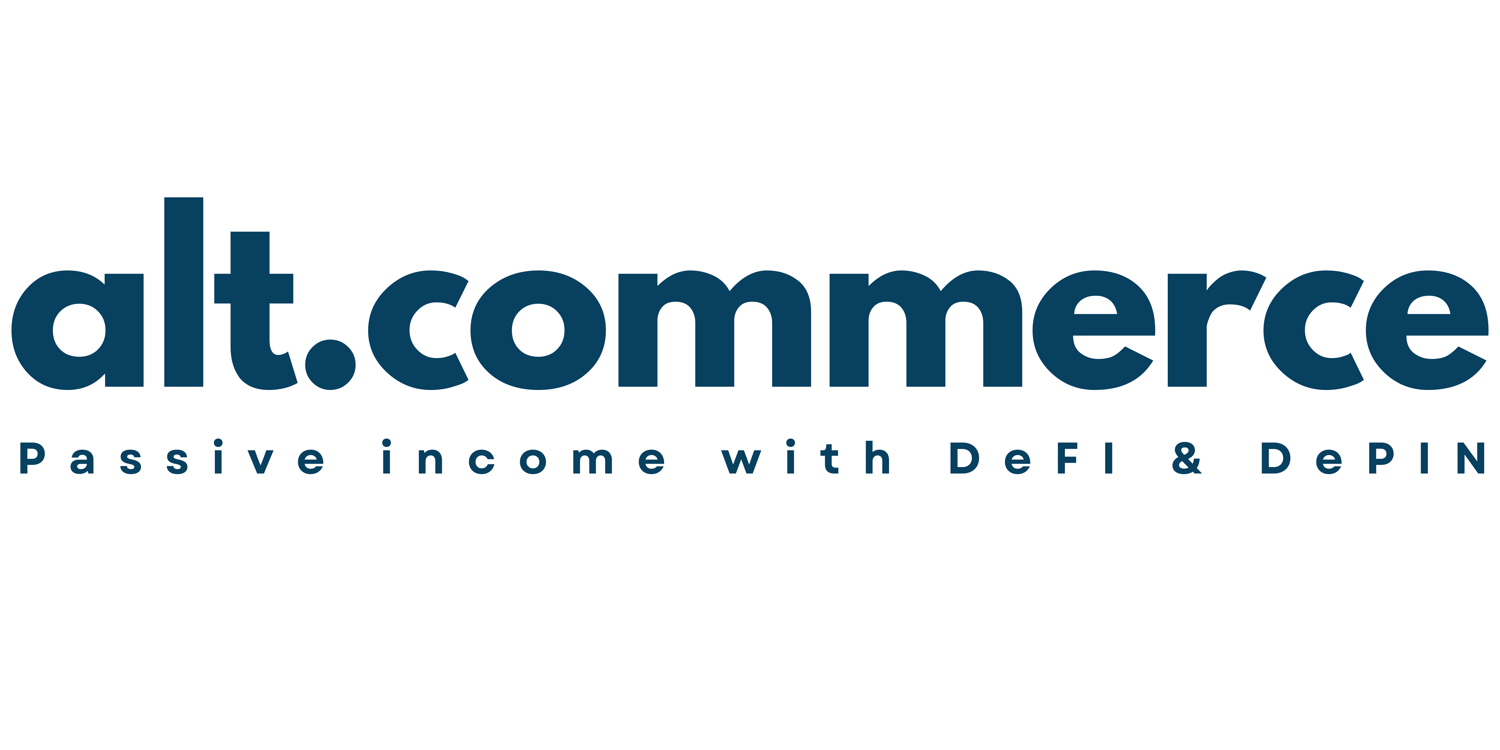Decentralized Finance, or DeFi, has taken the world by storm, revolutionizing traditional financial systems through the power of blockchain technology. While Ethereum has been the dominant platform for DeFi, a new player has entered the scene - Cardano. With its unique approach to scalability, interoperability, and sustainability, Cardano is poised to become a game-changer in the world of decentralized finance. In this article, we will explore the emergence of DeFi on Cardano and the potential it holds for the future.
Unleashing the Power of Smart Contracts
One of the key reasons why Ethereum became the go-to platform for DeFi was its support for smart contracts. These self-executing contracts enable the automation of financial transactions, removing the need for intermediaries and reducing the potential for human error. However, Ethereum's scalability issues have become increasingly apparent, leading to high fees and slow transaction times.
Cardano, on the other hand, has taken a different approach to scalability. By utilizing a unique proof-of-stake consensus mechanism, Cardano has been able to achieve high transaction throughput and low fees. This opens up new possibilities for DeFi applications on the platform, as users can now execute transactions more efficiently and cost-effectively.
Building an Interoperable Ecosystem
Interoperability is another crucial aspect of DeFi, as it allows different blockchains to communicate and share data seamlessly. Ethereum has struggled in this area, with limited interoperability options. Cardano, however, has built its platform with interoperability at its core.
Through the use of sidechains and a robust infrastructure, Cardano enables the integration of different blockchain networks. This means that DeFi applications built on Cardano can interact with other blockchains, such as Bitcoin or Ethereum, creating a truly connected ecosystem. This interoperability opens up a world of possibilities for DeFi users, as they can now access a wider range of assets and liquidity pools.
Sustainability and Environmental Responsibility
One of the criticisms surrounding DeFi on Ethereum has been its environmental impact. The Ethereum network relies on a proof-of-work consensus mechanism, which requires significant computational power and energy consumption. This has led to concerns about the carbon footprint of DeFi activities on the platform.
Cardano, on the other hand, utilizes a proof-of-stake consensus mechanism, which is far more energy-efficient. By staking their ADA tokens, users can participate in the network's consensus and earn rewards. This sustainable approach not only reduces the environmental impact but also creates a more inclusive and accessible DeFi ecosystem.
True Decentralization
Cardano is often touted as a more decentralized blockchain platform compared to some of its competitors in the cryptocurrency space. This is primarily attributed to two key factors: its consensus mechanism and its approach to governance.
Consensus Mechanism: Cardano utilizes a consensus mechanism called Ouroboros, which is a proof-of-stake (PoS) protocol. In PoS, instead of miners competing to solve complex mathematical puzzles to validate transactions (as in proof-of-work), validators are chosen based on the number of tokens they hold and are willing to "stake" as collateral. This means that the power to validate transactions and create new blocks is proportional to one's stake in the network. By design, PoS allows for a more distributed and energy-efficient approach to securing the network, as it doesn't require massive computational resources like proof-of-work.
Equitable Governance: Cardano emphasizes a decentralized governance model that involves the input of various stakeholders in the decision-making process. It achieves this through a structure of multiple layers: the Cardano Foundation, IOHK (Input Output Hong Kong), and Emurgo. These entities oversee different aspects of the Cardano ecosystem, including development, research, and adoption. Moreover, Cardano has a voting mechanism, where ADA token holders can participate in the decision-making process by submitting proposals and voting on key protocol changes or funding allocation.
The equitability principle is a fundamental value in blockchain systems, aiming to ensure fairness and equal opportunities for participants. Cardano's decentralization features align with this principle in several ways:
- Distribution of Power: Cardano's PoS consensus mechanism ensures that the power to validate transactions and participate in network governance is distributed according to token ownership. This means that participants with a larger stake have a proportional influence, but the system still allows smaller stakeholders to have a voice. In contrast, proof-of-work mechanisms often concentrate power in the hands of miners with significant computational resources.
- Accessibility: Cardano's focus on energy efficiency and lower computational requirements makes it more accessible to a broader range of participants. Proof-of-work mechanisms can create barriers to entry due to the high costs associated with mining hardware and electricity consumption. By utilizing PoS, Cardano reduces these barriers and allows more people to participate in securing and governing the network.
- Transparent Governance: Cardano's decentralized governance model ensures that decisions and proposals are openly discussed and voted upon by the community. This transparency fosters trust and inclusivity, as stakeholders have the opportunity to voice their opinions, contribute to discussions, and shape the future direction of the protocol. It helps prevent centralization of decision-making power in a few hands.
- In addition to the consensus mechanism and governance model, Cardano's token distribution and lack of large venture capital (VC) holders further contribute to its equitability and decentralization. Let's explore these aspects:
- Token Distribution: Cardano's ADA token distribution was designed to be as fair and widespread as possible. During its initial coin offering (ICO) in 2017, Cardano conducted a comprehensive sale process with the aim of reaching a broad range of participants. The sale included a mixture of public sales, strategic sales, and partnerships, ensuring that ADA tokens were distributed to various stakeholders worldwide.
- This diverse token distribution helps prevent centralization of power. When a blockchain project's tokens are concentrated in the hands of a few entities, it can lead to significant influence and control over the network. By distributing tokens widely, Cardano reduces the risk of a small number of entities dominating the protocol's decision-making process, thereby promoting a more decentralized ecosystem.
- Lack of Large VC Holders: Another factor that contributes to Cardano's decentralization and equitability is the absence of dominant VC holders. While venture capital investment plays a crucial role in funding and supporting blockchain projects, the concentration of token ownership in the hands of a few VC firms can lead to centralization and potential conflicts of interest.
- Cardano has taken a different approach by focusing on partnerships and collaborations rather than relying heavily on large VC investments. This approach allows for a more diverse ecosystem with a broader range of stakeholders. By avoiding excessive influence from specific VC holders, Cardano can maintain a more equitable and decentralized network, where decision-making power is not concentrated in the hands of a select few.By considering token distribution and minimizing the influence of large VC holders, Cardano enhances the equitability and decentralization of its ecosystem. These factors help ensure that power is distributed among a wide range of participants, fostering a more inclusive and fair blockchain network.
Overall, Cardano's emphasis on decentralization through its consensus mechanism, governance and distribution model promotes a more equitable and inclusive ecosystem. By distributing power and decision-making authority, Cardano aims to avoid concentration of control, foster community involvement, and provide equal opportunities for all participants.
The Future of DeFi on Cardano
As Cardano continues to evolve and expand its capabilities, the potential for DeFi on the platform is immense. With its scalable infrastructure, interoperability features, and sustainable approach, Cardano offers a compelling alternative to Ethereum for developers and users alike.
Already, we are seeing the emergence of innovative DeFi projects on Cardano, ranging from decentralized exchanges to lending platforms. As more developers flock to the platform and explore its capabilities, we can expect a vibrant DeFi ecosystem to flourish.
In conclusion, the rise of DeFi on Cardano represents a new frontier in decentralized finance. With its scalable infrastructure, interoperability features, and sustainability, Cardano has the potential to revolutionize the way we transact and interact with financial systems. As the ecosystem continues to grow, it will be exciting to witness the transformative power of DeFi on Cardano unfold.


